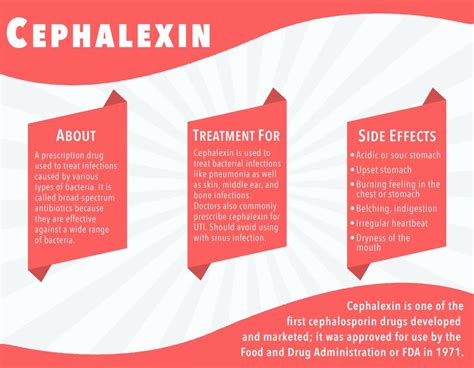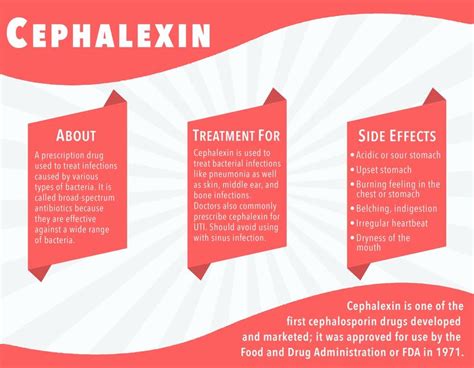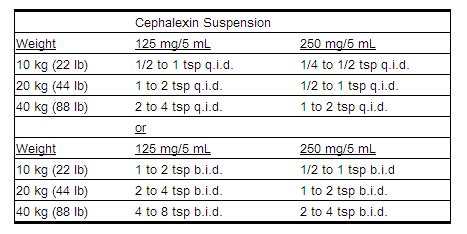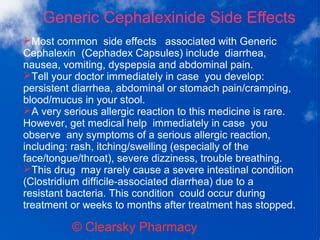Intro
Discover 7 Cephalexin side effects, including allergic reactions, diarrhea, and yeast infections, and learn about antibiotic resistance, dosage, and interactions to ensure safe usage of this cephalosporin antibiotic.
The importance of understanding the potential side effects of medications cannot be overstated, especially when it comes to antibiotics like Cephalexin. Cephalexin, a cephalosporin antibiotic, is widely used to treat bacterial infections by inhibiting the growth of bacteria. However, like all medications, it comes with its own set of side effects, some of which can be severe. It's crucial for patients to be aware of these potential side effects to ensure safe and effective treatment. Understanding the side effects also helps in managing them better, thereby improving the quality of life during the treatment period.
Cephalexin is prescribed for a variety of bacterial infections, including those affecting the skin, bone, and respiratory tract. Its effectiveness against a broad spectrum of bacteria makes it a commonly prescribed antibiotic. However, the experience of taking Cephalexin can vary significantly from one person to another, with some individuals experiencing minimal side effects while others may encounter more severe reactions. The variability in response underscores the need for personalized medical care and close monitoring during treatment.
The potential for side effects with Cephalexin, as with any medication, necessitates a thorough discussion between the patient and healthcare provider. This conversation should cover not only the benefits of the medication but also the potential risks, allowing patients to make informed decisions about their care. Moreover, understanding the side effects can prompt patients to seek medical attention if they experience any unusual symptoms, potentially preventing more serious complications. In this article, we will delve into the common and less common side effects of Cephalexin, providing insights into how they can be managed and what patients should expect during their treatment.
Cephalexin Overview

Common Side Effects of Cephalexin

Less Common Side Effects
Less common but more serious side effects can occur with Cephalexin. These may include: - Allergic reactions, such as rash, itching, or difficulty breathing - Severe diarrhea or stomach cramps - Vaginal itching or discharge - White patches in the mouth (oral thrush) - Joint pain - Fever These side effects necessitate medical evaluation to rule out more serious conditions or to adjust the treatment plan as needed.Severe Side Effects of Cephalexin

Managing Side Effects
Managing the side effects of Cephalexin involves a combination of medical supervision and self-care. Patients are advised to: - Stay hydrated to help prevent diarrhea and reduce the concentration of the drug in the urine, which can help prevent kidney damage. - Take the medication with food to reduce stomach upset. - Avoid taking antacids or supplements that contain magnesium or aluminum, as these can interfere with the absorption of Cephalexin. - Practice good hygiene to prevent the spread of infection. - Report any unusual symptoms to their healthcare provider promptly.Cephalexin Interactions

Pregnancy and Breastfeeding
Cephalexin is generally considered safe during pregnancy and breastfeeding. However, as with any medication, it should be used under the guidance of a healthcare provider. The benefits of treating the infection typically outweigh the risks, but close monitoring is recommended.Cephalexin Dosage

Overdose
In cases of overdose, patients may experience more severe side effects, such as nausea, vomiting, and diarrhea. If an overdose is suspected, medical attention should be sought immediately.Cephalexin Resistance

Alternatives to Cephalexin
For patients who are allergic to Cephalexin or in whom the drug is not effective, alternative antibiotics may be prescribed. The choice of alternative depends on the specific infection and the patient's medical history.Cephalexin and Other Health Conditions

Cephalexin and Age
The dosage and administration of Cephalexin may vary based on the patient's age. In newborns and young children, the dosage is typically lower and may be adjusted based on the child's weight and renal function.What is Cephalexin used for?
+Cephalexin is used to treat bacterial infections by inhibiting the growth of bacteria. It is effective against a wide range of infections, including those of the skin, bone, and respiratory tract.
Can I take Cephalexin if I am allergic to penicillin?
+While Cephalexin and penicillin are different classes of antibiotics, there is a small chance of cross-reactivity in patients allergic to penicillin. If you are allergic to penicillin, inform your healthcare provider before taking Cephalexin.
How long does it take for Cephalexin to start working?
+Cephalexin begins to work within a few hours of taking the first dose, but it may take several days to notice an improvement in symptoms. It's essential to complete the full course of treatment as prescribed.
In conclusion, while Cephalexin is an effective antibiotic for treating bacterial infections, it's crucial for patients to be aware of its potential side effects. By understanding these side effects and taking steps to manage them, patients can ensure a safer and more effective treatment experience. If you have been prescribed Cephalexin or are considering it as a treatment option, we encourage you to discuss any concerns or questions with your healthcare provider. Your feedback and experiences are valuable in helping others make informed decisions about their health care. Please feel free to share this article with anyone who might benefit from this information and engage in the conversation by commenting below.
